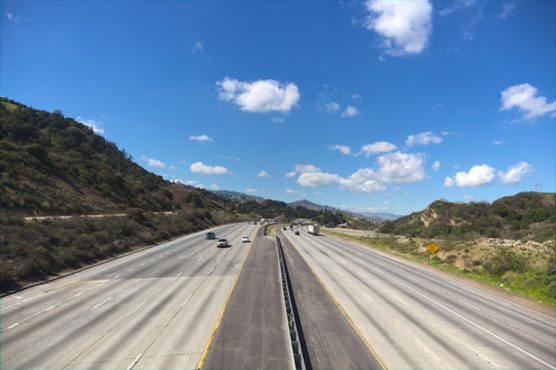The California State Auditor removed the state’s transportation infrastructure from its “high-risk list” Thursday after 16 years in recognition of the progress California has made in rebuilding and upgrading the state transportation system in recent years.
“The Auditor’s findings are a testament to the substantial progress Caltrans, the California Transportation Commission and our partners have made as we work together to improve and rebuild our state’s critical transportation infrastructure,” said California Transportation Secretary Toks Omishakin. “This progress has been especially noteworthy since the passage of Senate Bill (SB) 1, the Road Repair and Accountability Act of 2017 – landmark legislation that ushered in a new era of infrastructure investment to rebuild California. Our elected officials and the people of California entrusted us with their hard-earned tax dollars to upgrade the state’s aging infrastructure, and we have delivered and will continue to make good on that trust. Coupled with Governor Newsom’s infrastructure streamlining package and a $15 billion investment in clean transportation infrastructure, along with recent increased federal infrastructure funding, our state is in an incredible and unique position to keep making progress and accelerate our transition to a cleaner, safer, more equitable and more connected transportation system that benefits all Californians.”
The Auditor first designated California’s deteriorating transportation infrastructure as a high-risk issue in May 2007, noting at the time that a long-term stable funding source was needed to address maintaining and upgrading the state’s aging roads and bridges, reduce traffic delays, improve goods movement, and increase options for transit, intercity rail and active transportation like walking and biking.
That all changed with the passage of SB 1, which provides more than $5 billion in transportation funding annually that is shared about equally between state and local agencies. SB 1 represented the first significant, stable and ongoing increase in state transportation funding in more than two decades. To date, California has invested $18.3 billion in SB 1 funding in more than 10,000 projects in communities throughout the state, creating more than 237,000 jobs.
As the Auditor notes, keeping California’s transportation infrastructure in good repair is important because it enhances safety and maintains the usable life of critical state assets, which currently consists of 50,000 lane miles of pavement, 13,200 bridges, 213,000 culverts and drainage facilities, and nearly 21,000 transportation management system elements (changeable message signs, meters, etc.). Caltrans already has exceeded the 10-year SB 1 targets in three of the four primary infrastructure targets and is making substantial progress on the fourth. Since the start of SB 1, Caltrans has:
– Enhanced pavement on nearly 15,000 lane miles on the state highway system so 99% of pavement is in good or fair condition – above the SB 1 goal of 98% by 2027.
– Fixed 1,512 bridges – more than doubling the number of structures repaired annually and already surpassing the SB 1 goal of 500 additional bridges restored by 2027.
– Repaired 578,285 linear feet of culverts – a more than three-fold increase from pre-SB 1 levels – and cleaned more than 1.6 million linear feet of culverts so 90% of drainage systems on the state highway network are now in good or fair condition, in line with SB 1’s 10-year goal.
– Added or repaired nearly 6,200 traffic management system elements, with 77% currently in good or fair condition and on track to reach the SB 1 target of 90% in good condition by 2027.
To leverage this notable progress in upgrading and rebuilding the state’s critical infrastructure, Governor Newsom signed a $15 billion clean transportation infrastructure package as part of the 2022-23 state budget to further the state’s ambitious climate goals. These historic multiyear investments are improving and expanding transit and passenger rail service throughout the state, increasing safe walking and biking options, making key safety improvements that will save lives, reconnecting communities, continuing progress on the nation’s first electrified high-speed rail line, and upgrading the state’s supply chain infrastructure to support a more efficient, sustainable and resilient goods movement system.
In addition to these historic state investments, California is receiving an influx of federal funding through the Infrastructure Investment and Jobs Act. Also known as the “Bipartisan Infrastructure Law,” this represents a once-in-a-generation federal investment in the nation’s infrastructure to improve the sustainability and resiliency of the country’s energy, water, broadband and transportation systems. Since November 2021, California has received more than $22 billion in federal infrastructure funding. That includes nearly $16 billion in federal transportation funding to upgrade the state’s roads, bridges, rail, public transit, airports, electric vehicle charging network, ports and waterways. These transportation investments alone have already created nearly 48,000 jobs.
To review the latest news and information on state and federal infrastructure investments, visit RebuildingCA.ca.gov, which contains data on the increased funding. Website visitors can learn more about the different state and federal infrastructure programs, track the amount of funding California is receiving, and find projects on an updated interactive map.
Like this:
Like Loading...
Related





 Tweet This
Tweet This Facebook
Facebook Digg This
Digg This Bookmark
Bookmark Stumble
Stumble RSS
RSS

























REAL NAMES ONLY: All posters must use their real individual or business name. This applies equally to Twitter account holders who use a nickname.
0 Comments
You can be the first one to leave a comment.